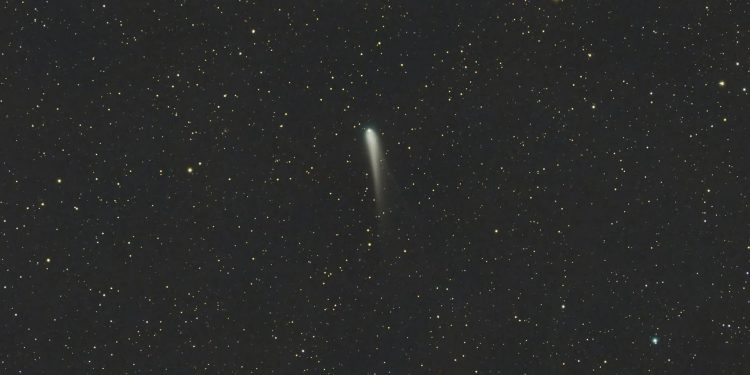As Comet C/2023 A3 (Tsuchinshan-ATLAS) draws closer to the Sun, its brightness continues to increase, making it a highly anticipated event for stargazers. Now visible to the naked eye, the comet offers a stunning spectacle when viewed through binoculars or a telescope. But the most breathtaking view of all comes from astronaut Matthew Dominick aboard the International Space Station (ISS). Dominick captured an extraordinary video of the comet rising above Earth’s horizon, with the ISS’s Cupola—a windowed observatory—providing the perfect vantage point for witnessing this rare celestial event.
A Cosmic Timelapse Like No Other
So far Comet Tsuchinshan-ATLAS looks like a fuzzy star to the naked eye looking out the cupola windows. But with a 200mm, f2 lens at 1/8s exposure you can really start to see it. This comet is going to make for some really cool images as it gets closer to the sun. For now a… pic.twitter.com/JstaSLJ4Ui
— Matthew Dominick (@dominickmatthew) September 19, 2024
Sharing his excitement on social media platform X, Dominick described the comet’s appearance: “So far, Comet Tsuchinshan-ATLAS looks like a fuzzy star to the naked eye looking out the cupola windows. But with a 200mm, f2 lens at 1/8s exposure, you can really start to see it.” His timelapse video offers a preview of the breathtaking visuals to come as the comet nears its perihelion. On September 27, Comet Tsuchinshan-ATLAS will make its closest approach to the Sun, coming within 58.6 million kilometers (36.4 million miles) of the solar surface. Experts have confirmed that the comet will remain visible to the naked eye, but as it gets closer, its brightness could intensify even further.
By October 9, it’s expected to be visible at sunset, offering prime viewing opportunities during both morning and evening hours. Depending on its brightness curve, Comet Tsuchinshan-ATLAS could even outshine Jupiter and become one of the brightest objects in the sky. The comet will make its closest approach to Earth on October 12, offering another exciting opportunity to witness this cosmic visitor. Whether you catch it at dawn or dusk, this will be one of the most spectacular astronomical events of the year.











